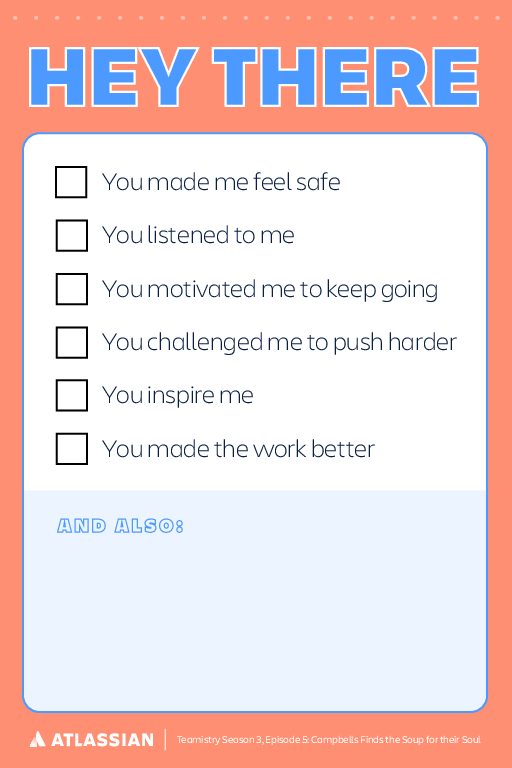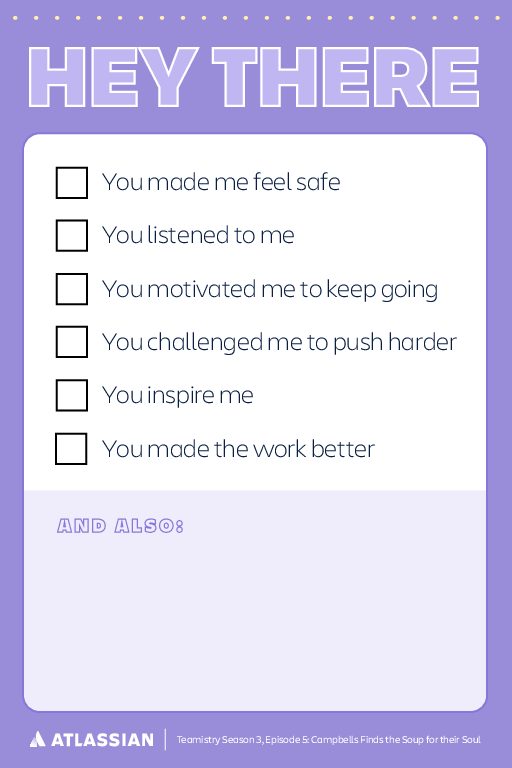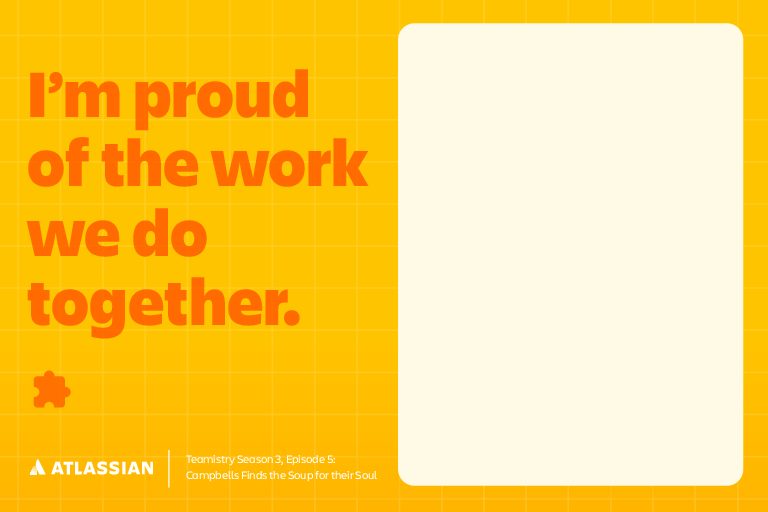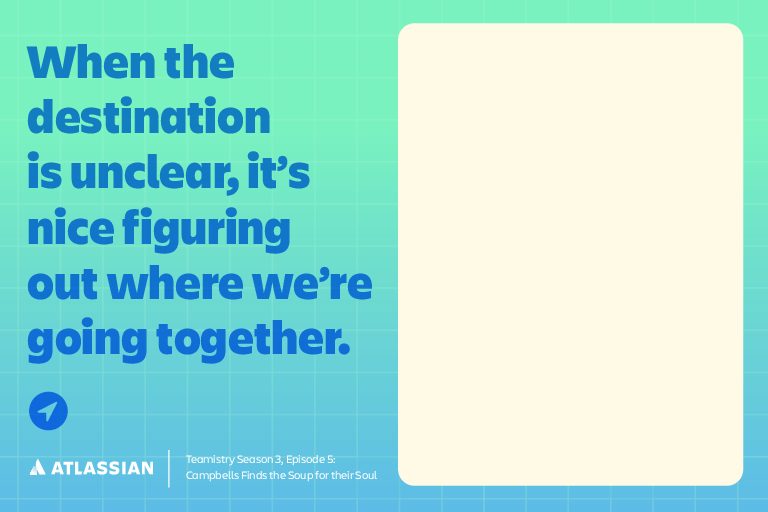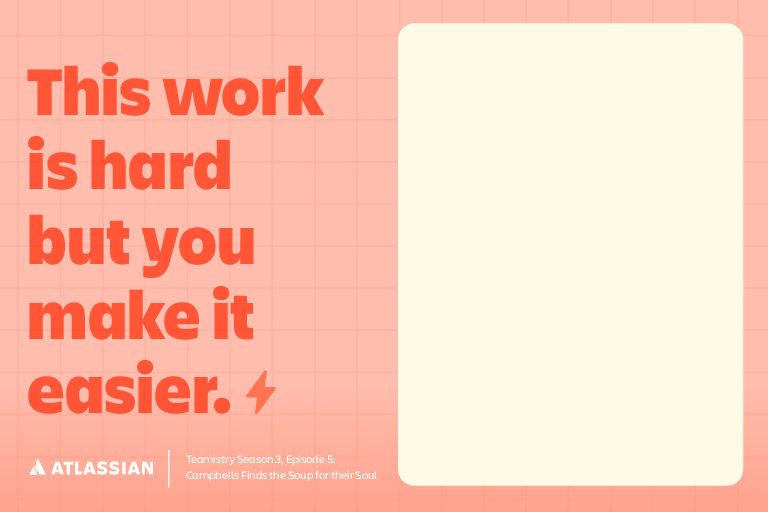The can is Americana itself; the product indistinguishable from the ordinary contents. It’s part of a quintessential American meal, soothing the hunger and warming the souls of families for more than a hundred years. But in 2001, a toxic atmosphere hung over the workers at The Campbell Soup Company.
Its headquarters stood isolated behind barbed fences in the run-down city of Camden, New Jersey. Inside, a culture of anxiety and distrust prevailed. Employees, uneasy about going outside the gates, ate lunch in the building – and got no discounts on soup. The dwindling morale, along with impending financial crisis, pushed the company to the brink: it had the lowest employee engagement of any Fortune 500 company. To save this American culinary and cultural icon from collapse, a new CEO enters the scene and embarks on an ambitious mission. He wants to replace and rejuvenate the leadership team, boost morale, and turn the company’s fortunes around – in just three years. His strategies are both tough and tender: he lets hundreds of unfit senior managers go, and sends tens of thousands of handwritten letters to employees to recognize and praise their work. In the penultimate episode of Teamistry’s third season, host Gabriela Cowperthwaite takes us behind the scenes to witness Campbell’s rebirth. We hear from the former CEO who led this mission, Douglas Conant, who explains how he translated “Maslow’s Hierarchy of Needs” into a step-by-step framework to rebound employee morale and confidence. We also hear from two of Doug’s handpicked recruits who represented a new era of leadership at the company: Nancy Reardon, former Senior Vice President and Chief of HR and David White, former Senior Vice President of Global Supply Chain.
Episode Extras
Transcript
Chances are, when you hear someone say "Campbell's" you think of soup. You probably have a favorite, too.
Douglas Conant:
My favorite was tomato rice soup.
Nancy Reardon:
My favorite is tomato bisque.
David White:
My favorite is the Chunky Italian Wedding Soup.
For the record, mine is tomato with grilled cheese dipped into it. Just unreal.
The Campell’s brand is strong - the company is over one hundred years old and, I mean, Andy Warhol! But despite all that, in 2001, Campbell's leadership had to pull its company from the brink of collapse...from the inside.
Douglas Conant:
Campbell had financially lost, half of its market value in the prior three years
Nancy Reardon:
So, I think there was a sense of fear and anxiety, as well as questioning where the company was going.
Douglas Conant:
there was a reluctance on the part of management to acknowledge that they were in what a friend of mine used to call the circle of doom
That fear, anxiety and impending financial doom meant that Campbell’s had the lowest employee engagement of any Fortune 500 company.
Douglas Conant:
The environment was more toxic than I imagined.
Their solution was to hire a new CEO and task him with literally saving the company, by figuring out some way to build back trust, loyalty and engagement with Campbell’s thousands of employees. And he had three years to get it right.
Douglas Conant:
if you go in as a CEO, most companies especially what I'll call old economy large consumer package goods companies, you have three years to get it right. The first year is the other guy's fault. The second year, it's our fault, but we're learning. And the third year, you own it. So, whatever you're doing, you've got to go from being a very troubled Titanic sinking-looking company when you start to being a viable company at the end of year three.
How did the company turn things around? They formed a new leadership group that had to be both tough and tender.
I’m Gabriela Cowperthwaite and this is Teamistry — an original podcast from Atlassian, makers of teamwork software like Jira, Confluence and Trello. This show is all about the chemistry of teams – and how some teams can change entire organizations and even whole industries with new ideas and unconventional ways of working.
Advert: “Campbell’s Cream of Vegetable Soup. Made with milk and country cream and seven garden vegetables. Bursting with flavour and tasty goodness.”
There’s a reason Campbell’s soup doesn’t really need an introduction in the United States. It’s in over 90% of US homes and in fact, if you open your pantry, there’s statistically six or seven cans of Campbell’s soup in there.
Douglas Conant:
And we also owned some other very iconic brands like Pepperidge Farm in the United States, at the time Arnott's in Asia Pacific, V8 Juice which was the largest vegetable juice brand in the world. And our soup business was the largest soup company in the world.
This is Douglas Conant. He’s the guy Campbell’s brought in as the new CEO in 2001 to save the company. Doug was brought in because he had turned around a toxic work culture at Nabisco. He thought he’d seen it bad. Before he joined, Campbell’s had been on a steady and alarming financial decline for years. The downturn began with a desire to increase earnings by raising prices. But that invited lower priced competition which drove sales volumes down. To maintain margins, Campbell’s started making cuts.
Douglas Conant:
They cut all the marketing spending which is the lifeblood of a consumer products company in terms of marketing your brand and bringing innovation to market. And then, you had no spending. So, what happened with high prices and no spending? The volume started to fall even faster at which point, they said, "Well, we have to reduce our costs." So, they started a wave of productivity that became untenable. They literally started taking the chicken out of chicken noodle soup.
And inevitably, it often seems, after Campbell’s had cut marketing and production, they started cutting staff.
Douglas Conant:
the workforce felt abused. Everyone who worked there had a friend or very close acquaintance who had been let go unceremoniously with an inadequate package and inadequate support.
Which means little or no severance, benefits or compensation.
Douglas Conant:
...the company’s not taking care of the people who have been loyal and working there for so long. And so, everyone was observing this failure to bring humanity to the workplace every day.
On top of all that, the company headquarters looked like a maximum security prison.
Douglas Conant:
we had a facility that was surrounded by razor wire with guard towers... But actually that was there to ostensibly make the employees feel safer. But it was a challenge to go to work that way every day.
The company was housed in Camden, New Jersey, a city that at the time was overpoliced and suffering high crime rates after years of neglect and mismanagement. Kind of like Campbell’s itself.
Douglas Conant:
Well, at Campbell, because nobody wanted to go out into the community Camden at lunchtime or anytime during the day because it was so dangerous, the company store figured out, "Well, we can charge our employees more because they don't want to go out."
Yeah, that’s right, Campbell’s decided because they literally had a captive workforce, they’d charge them more for their own product. When Doug arrived at Campbell’s, he asked Gallup to survey employee engagement: it was the worst they had ever seen in a Fortune 500 company.
Douglas Conant:
It was an incredibly low trust culture. It was low trust all the way from the board not trusting management, to the middle management not trusting senior management, and to the everyday worker not trusting anybody. And even if I could pull someone aside and get some feedback, they would have trouble being candid with me even in private. The day I started my first job on behalf of the board was to fire the CFO. They said, "He's got to go. We don't trust him."
You heard that right. First thing Doug did was fire one of the top leaders. That was just the beginning.
Douglas Conant:
All of the research says people will join a company and leave a manager. And people had inadequate management who had provided inadequate leadership... So, there was no confidence in your manager, and you didn't feel valued, and there were a thousand examples of how you weren't valued. Every employee could recite them.
Nancy Reardon was the Chief Human Resource and Communications Officer for Campbell's at the time, and explains the effect low engagement has on the workplace.
Nancy Reardon:
You typically find that people don't trust their colleagues, they don't reach out across functional lines, they stay in their own silo because it seems more comfortable, or they feel it protects them. So, you want to create a situation where people are willing to collaborate, they're willing to try things, take risks. All that leads to more innovation.
Doug had a vision for turning Campbell’s around. And it was based on Maslow's Hierarchy of Needs. That’s a motivational theory of psychology that suggests we can only reach our higher goals if our fundamental needs are met. It’s often portrayed as a pyramid. Doug applied Maslow's Hierarchy to the workforce, naming his levels “living, loving, learning, and leaving a legacy.”
Douglas Conant:
At the base of the pyramid, it's all about if you have a great workplace, you have the tools and equipment you need to do your job, and you're excited to go in and work in the physical space.
You then go up to the next level. And in a high engagement culture, we talk about loving, and that's you have deep and personal connections in the workplace that transcend ordinary work relationships so that you literally have the back of all your associates because you care about them, and they care about you. The learning level, the next level up, is about having opportunities to learn and grow. And in the high engagement culture, you have opportunities to learn personally and advance your career professionally. At the peak of the pyramid, which Maslow would call self-actualization, you have ‘leaving a legacy.’ You had to feel as if you were doing something special. Today, we talk a lot about purpose-driven performance in the workplace, and it's never been a more dominant theme than it is today.
That sounds good but how was Doug actually going to achieve this level of self-actualization at a company so deeply mired in distrust and disengagement? He’d do it by not trying to do it all himself. He’d need to build a new team of leaders at Campbells.
Building new leadership at Campbell’s would require doing something most companies and organizations try to avoid: making difficult decisions.
Douglas Conant:
When I started in my career, what did you want me to be? Do you want me to be tough or nice? And the answer is you've got to do both especially in the here and now. You've got to be tough-minded on standards or, quite frankly, you won't have the opportunity to lead for very long. But at the same time, you have to care about the individual if you want them to care about the agenda, and you should care about them not because you have to, but because you want to, because they can tell the difference.
Nancy Reardon was a key member of this new leadership team.
Nancy Reardon:
Whenever you're changing an organization... You have to stick with the concept and persevere. ...one of the things Doug brought with him, which was ...the culture we wanted to have at Campbell's, and that's one of caring about employees, but still being able to make hard judgements. So, if we found that there was an individual that wasn't going to be a fit for Campbell's future, it was trying very hard to treat them honorably if we were going to help them exit the organization, or help them find a better assignment that could leverage their talents within the organization. And we were successful at moving people around, not just exiting them.
Douglas Conant:
Transforming a company, it's all about the people. It's far and away job one because when you're a CEO, you quickly discover that you actually don't do anything. Everything is done by the people who work for and with you.
Doug felt the transformation of leadership was critical to his mission because if the ultimate goal is employee engagement—by creating a culture that honours people—he needed a team that shared those values. Even the process of building that team needed to adhere to those principles.
Douglas Conant:
We had a company meeting day one. And I acknowledged ... that you can't talk your way out of something you behave your way into. It was going to take time. And I also acknowledged the low level of trust. And I said, ...It's hard for me to imagine you buying into our agenda as a company. Before, we tangibly demonstrate to you that we buy into your agenda as a person. I'm quite sure that most of the senior management were just rolling their eyes thinking, "Well, yeah. We'll see how long you last, kid."
Doug started at Campbell’s in January of 2001. In July, he launched his three year transformation plan. He was going to rebuild the culture by starting with rebuilding the leadership. And he was going to do it with a process psychologist Bruce Tuckman called “forming, storming, norming and performing.” It starts with forming a team...
Douglas Conant:
... and attracting and developing people who have the character, competence, and the aptitude for team teamwork that you need. Then, you have to have the capacity as a group of people working together to storm through issues with great candor and respect and civility and then, to get through the far side of those big issues to solutions that you can actually act on, and you can create a set of norms for expected behavior. And then and only then can you begin to perform at a high level with consistency.
But Doug was faced with an initial challenge: creating a sense of urgency that the leadership team needed to become a resource, a group that would help lift everyone in the company up.
Douglas Conant:
We created what we called the Campbell Leadership Model and said, "Here are the leadership behaviors we expect of every leader." And the number one expectation was that you're going to inspire the trust of the people who work for and with you. And it needs to be evidenced, and we started a metric-driven process of Gallup Employee Engagement Surveys every year.
In other words, Doug created a sort of true north for what was expected of the leadership team to deliver and how they were expected to deliver it. But again, while that was a great road map, they needed to start the tough work of rebuilding the leadership team, in a way that lived up to their own principles and values. As Nancy explains, this was a process of finding and promoting some folks from within.
Nancy Reardon:
Over time, with our succession planning process, we would identify and highlight individuals that were ready for a promotion and look for ways to challenge them by possibly giving them a promotion in a different division, assigning them to a cross-functional project, which would give them better understanding of how different functions come together to make say a product offering successful or a faster to market, or to do a rollout of a new piece of technology where it's important that not only the people in the technology, but the users understand the rollout dynamics and what to make it more successful.
The new leadership team was built with internal and external hires. But just in case you’re thinking Doug only replaced a handful of managers...
Douglas Conant:
...by the end of year three, we had turned over 300 of our top 350 leaders which is the most I'm ever aware of in an old economy consumer products-based company. Of the 300 that left, we promoted 150 people from within...who were ready to contribute in a bigger way but had been just stifled by poor leadership.
You heard that right: 85% of the leadership team was replaced.
Douglas Conant:
We had turned over six out of seven leaders in the first three years who either chose to leave because they didn't have confidence in what we were doing which would have been understandable. It was scary or else they couldn't make the transition that we were asking for. And then, we tried to help them leave in a very civil way. And while we weren't perfect on that front, we were far better than we had been than the company had been prior to my arrival.
Replacing the old leadership with new faces was a massive change, but even as it was being built, that team needed to deliver on the culture change Doug had promised.
Remember Doug's variation on Maslow's Hierarchy mentioned earlier? The pyramid founded on fundamental needs and topped by self-actualization that Doug feels is the way to build engagement? Here’s how his team used that system in their rebuilding at Campbells.
One of the new leaders Doug brought in was David White. He was tasked with running Campbell’s global supply chain. Not only was he an external hire, he had previously worked at Proctor and Gamble so he wasn’t even from the food industry. But Doug saw in David someone who could challenge the status quo at Campbell’s especially when it came to the first level of Maslow’s hierarchy: having the tools and equipment you need to do your job. Or as Doug calls it “living.” In David’s case, this was quite literal, as he set an ambitious goal...
David White:
... to cut our injuries in half over the next three years, cut our loss time injuries in half over the next three years
Those are injuries so bad, someone can’t continue working for days, weeks or months.
David White:
and sent a letter to every plant manager and every warehouse manager, and all my employees that we were setting this goal and nothing was more important. The people kind of freaked on my second week. HR came to me and said, "You cannot set a goal like that. Employee safety works for HR, not the global supply chain." Well, sorry, I already sent the letter out.
When David started, across Campbell’s global supply chain, they were having 2 or 3 loss time injuries a week. Which was pretty standard for the food industry. But that was not up to David’s standards. And more than just HR would need to come together to address this challenge.
David White:
I concluded pretty quickly that it was part of the culture, that they had accepted mediocrity as an okay thing, that their benchmark was the food industry, not world class companies. DuPont is great at safety, and that's who we should have been benchmarking against, not other food companies. It's so connected to culture and engagement, and people. It fits... If you're going to do a good quality product, you have to have good safe plans to be doing it.
One of David’s strategies to increase safety was to increase the positive feelings around safety. And this moves us up Maslow’s pyramid to the next level: Loving. Where you create a deep and personal connection to the workplace.
David White:
We started celebrating safety improvements, when a plant or an organization went one year without a lost time injury, or a million work hours without a lost time injury, they earned a safety flag. They would hoist it in their cafeterias in front of all the employees, or in their front lawn. They'd invite the local mayor or the local newspaper. They were really proud. This is people driving something that's really important, employee safety, and it helped improve the culture and it helped improve results.
While David’s efforts were focused on the supply chain, the approach of celebrating positive contributions and building a sense of pride was spreading to other members of the leadership team and throughout the company, as Nancy explains.
Nancy Reardon:
Doug and I created a thing called CEO Awards, and these awards were cash awards that went to employees that had a huge success in their particular areas. And these were not for the senior team. So for each awardee, Doug and I would collaborate on a personal letter to them, citing and recognizing what they did to become a hero that year for their business. And instead of popping these in the mail, Doug would find occasions to present them in person. A couple of years after we instituted this process, one of the members of our board of directors asked me to go back and find out well, were they successful? And you bet, we went back and tracked the job history of all the people that had received the award. The retention value was incredible, we retained almost every employee that had been recognized. And very often, those were the same employees that later were promoted.
But these weren’t the only personal letters Doug wrote to employees as a way of improving company culture.
Douglas Conant:
I would develop a practice of writing 10 to 20 notes celebrating contributions of significance with everyday employees. And I did that six days a week for a decade. They were basically built to celebrate contributions of real significance that were on strategy where someone had delivered over their sales quota or had delivered a project on time under budget or had advanced an important strategic initiative in DEI. And we did the math with a calculator at my desk and we said, "My god. I sent out over 30,000 notes to Campbell employees." We only had 20,000 employees.
Which meant wherever you went in the world of Campbell’s, you’d find a handwritten note pinned on a wall or cubicle.
Douglas Conant:
it wasn't gratuitous. It was real stuff. They had done real good work. And basically, what I was saying was we are paying attention and we appreciate it.
Nancy Reardon:
by showcasing great ideas, creates a sense of excitement, a sense of pride. People loved it when they began to feel like we were having some wins in the market, that new products were taking hold, that the stock price was beginning to creep up.
With a solid foundation of both living and loving at Campbell’s, the next step in the pyramid for the new leadership team was creating and fostering opportunities to learn and grow. This began with the team itself, as Nancy explains.
Nancy Reardon:
Even though I was responsible for human resources, I had every right and ability to comment on a marketing plan, or ask a question about reporting our results or question a colleague and supply chain about, had he thought through all the necessary steps in a major change. Doug really encouraged his team to think out of the box beyond their own hierarchy, and I think that's an important lesson for any manager, is to utilize the talents of the people who work for him or her, not just have them sit in their own narrow bandwidth.
Another of the strategies instituted to inspire learning about oneself as well as team growth was to “Declare Yourself.” On the first day a supervisor and employee would work together, they would “declare” to each other what they valued, how they worked, how they communicated. This requires a fair bit of self knowledge, the learning that would lead to better outcomes for the team by setting reasonable expectations and smoother working relationships.
In Maslow’s hierarchy of needs, the top of the pyramid is self-actualization. For the workplace, Doug repositions that as “leaving a legacy.” In the case of Campbell’s, this had to start with actually undoing the old legacy and building a new one. And for global supply manager David White, that began with a tragedy.
David White:
A few months after I started with Cambell's, they had a fatality, a death in the plant in Paris, Texas. It's a terrible thing. We found out later that that person had an injection insulin pump of some kind of, and it had failed. He was sick, and he was on a high platform, and he fell and he died. Old Cambell's finance folks came and said, "Look, we think we should deny this as a workplace fatality. We could save a $1 million on our workman's compensation insurance cost..." And I sat there with these folks and said, "You have to be kidding me. Paris is a small town. The plant manager goes to church on Sunday morning. His employees are there sitting around him. You're going to deny that a fatality occurred in the plant? You're going to take benefits, workman's compensation benefits away from the family?" And the CFO stepped in there and agreed with me and said “no, we’re not going to do that.” In this case, it was a horrible thing, a fatality, but the story that then spread was Cambell's did the right thing in this terrible situation.
Another aspect of rewriting Campbell’s legacy involved their headquarters. If the company’s culture was going to be transformed, that transformation needed to be physical as well.
David White:
We looked at actually moving Cambell's Headquarters out of Camden, and decided it would just be a terrible blow to the city and didn't do that. We went to the board and proposed funding a new building, an entrance to our World Headquarters that would have a world class cafeteria, a world class training center, a world class fitness center we'd be really proud of, and also proposed buying up that land and junk all around us and tearing it down and planting grass and trees. It's the first time ever the board came back and gave us more money than we asked for. I think they gave us $62 million.
The newly refurbished headquarters includes a demonstration kitchen, an open air courtyard and even tents for outdoor meetings. A new legacy for the company and the community. A physical manifestation of the leadership team’s goals.
David White:
The facility supported the culture we were trying to build, and it made a difference.
Oh, and in addition to building the new cafeteria, Campbell’s began subsidizing their offerings. Which meant soup at an employee discounted price.
After all of this work, this transformation, the question still remained: did it have a substantial and lasting impact on employee engagement?
Nancy Reardon:
Campbell's had gone from the worst company in the fortune 500 to consistently, I think there were at least three, if not four years where we were in the top 25 most engaged workforces in the world.
And what did that mean for the bottom line? You remember how, in the three years before Doug arrived, Campbell’s lost half of its market value? Well, after his team’s first three years of transformation, their market value was up 64 per cent.
Not only that. Doug saw a workforce in need of celebrating greatness and not settling for mediocrity. So he took a human approach in transforming company culture, applying his version of Maslow's pyramid to build a leadership team that nurtured talent and challenged the status quo. In doing so, this team challenged the legacy of how things are done in the food industry. Through his public speaking and consulting, he has brought these lessons to other companies and other industries.
Douglas Conant:
You simply have to care, and it has to be unmistakable. If you don't care about the associates, and you don't evidence that, whether it's remote or in person, you're at risk. You have to create a high touch, high care culture, and you have no choice. So, if you want to win, if you want to win in the workplace, you have to care about the people, and it has to be manifested in tangible behavior every day. Full stop, no choice.
To check out the transcript of this episode and lots of extras, go to atlassian dot com slash teamistry. In our next episode, we go behind the scenes of Will Smith’s pandemic Snapchat series to find out how it changed a media company’s approach to content creation and teamwork from now on. Plus, a sneak peak at my own next movie. That’s next time on Teamistry, an original podcast from Atlassian. Thanks for listening.







































